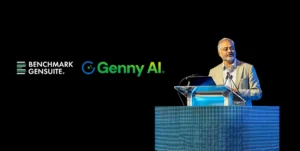Choosing the right EHS software is one of the most strategic decisions your team will make. It’s not just about features, it’s about finding a system that fits your regulatory requirements, integrates with your existing tech stack, and drives adoption across frontline teams.
The most successful EHS leaders don’t wait until the RFP stage to get serious. They start early, align stakeholders, and map out their priorities from day one. This guide walks you through what to look for in EHS software, how to compare vendors effectively, and what your internal teams, legal, IT, operations, and executive leadership will expect at each stage of the buying journey.
What Are the Must-Have Features in EHS Software?
Modern environmental, health, and safety (EHS) software needs to do more than just record incidents or track training. The right platform should help your team manage compliance in real time, reduce operational risk, streamline cross-site coordination, and support ESG and sustainability reporting.
Whether you’re evaluating your first EHS system or replacing outdated tools, these 8 features reflect what experienced buyers consistently look for, and what your organization will need to stay audit-ready, scalable, and efficient.
- Regulatory and Permit Tracking
A strong EHS platform doesn’t just remind you of due dates, it helps you prove compliance. Look for tools that maintain audit trails for every permit condition, attach documentation, and alert you before you cross a limit. Bonus points for systems that accommodate permit-specific logic, like daily rolling averages or variable thresholds based on production volume. Learn more - Incident Reporting and Investigation
The best systems don’t just collect incident reports, they help enforce accountability and continuous improvement. Prioritize platforms that support immediate mobile capture, flexible categorization (injury, near miss, property damage, etc.), and structured investigations tied to root cause libraries. Look for tools that map investigations back to training gaps, SOP deviations, or equipment failures. Learn more - Audit and Inspection Management
Inspections are only useful if they’re repeatable and actionable. Look for software that enables custom checklists by site or regulatory scope, assigns actions based on findings, and tracks closure rates across facilities. Version control is key, especially when managing ISO 14001 or 45001 compliance. A system that timestamps edits, archives old forms, and locks scoring logic ensures consistency across auditors and across time. Learn more - Task Automation and Escalation
Every experienced EHS professional has dealt with the fallout of a missed CAPA or a nearly expired SOP. Your software should prevent those issues before they happen. Look for platforms that offer automated task reminders, risk-based escalation rules, and workflows that launch directly from incidents, audits, or inspections. Learn more - Training and Document Control
“Show me the training records.” That’s how most audits begin. Your EHS platform should make it easy to demonstrate who was trained, on what, and when. It should track completion by job role, flag upcoming retraining, and tie required courses to specific risks or procedures. On the document side, look for robust version control, a clear change history, and built-in approval workflows. Learn more - Mobile and Offline Functionality
If your site teams can’t record data in the field, it’s not going to happen later. Choose software that supports full functionality, like incident entry, inspections, photo uploads, even when offline. Whether you’re in a mine, on an oil platform, or at a remote wind site, connectivity shouldn’t be a barrier to compliance. Learn more - Integration with Existing Systems
Your EHS program doesn’t operate in a vacuum. The platform must integrate with HR systems (for training assignments), maintenance platforms (for equipment data), and ERP software (for procurement and compliance cost tracking). Ask for actual case studies or API documentation. A vendor that promises “easy integration” but can’t show proof is a risk to your timeline. Learn more - Support for ESG and Sustainability Data
Your software should capture and tag data relevant to CSRD, GRI, SASB, and CDP, not as an afterthought, but as a core function. Can it track Scope 1, 2, and 3 emissions by source? Can it flag gaps in required disclosures? Can it export audit-ready files aligned with reporting calendars? More EHS leaders are being pulled into ESG, and your software should help you lead those conversations, not chase them. Learn more
Checklist: Top EHS Software Criteria by Business Need
| Business Priority | Feature to Prioritize | Why It Matters |
|---|---|---|
| Audit-readiness | Structured compliance calendar + audit trail automation | Ensures traceability across inspections and regulatory filings |
| Frontline adoption | Mobile-first UI + offline data capture | Boosts real-world usage in plants, mines, and remote sites |
| Incident response | Root cause investigation + CAPA escalation | Turns reports into action without manual tracking |
| ESG reporting alignment | Scope 1-3 data tagging + CSRD/GRI alignment | Future-proofs your program against evolving disclosure rules |
| Cross-site coordination | Configurable roles, workflows, and dashboards | Maintains consistency across facilities and teams |
Not every feature matters equally. Start with your top 3 operational goals and pressure-test vendors against them.
How Do You Evaluate and Choose the Right EHS Software?
Start With Use Cases
Before you ever open a demo or compare feature lists, sit down with your site teams and dig into where your current systems break down. What are the recurring compliance headaches? Where is risk slipping through the cracks? What workarounds are people using because the current tools just don’t work?
Start with those pain points, not abstract feature requests. If your confined space entries aren’t tied to training validation, build that into your software requirements. If you’re logging near misses on paper and they’re not triggering any upstream action, that’s a breakdown the software should solve.
Strong EHS programs rely on repeatable, auditable, cross-functional workflows. Your software should either support those out of the box or allow you to configure them without writing custom code or opening a support ticket every time something changes. If the software can’t handle the nuances of your operations, you’re buying a future problem, not a solution. Learn more
Involve Stakeholders Early
Too many EHS teams treat software selection as “their” project until the shortlist is finalized. That’s a critical mistake, because the moment you involve IT, procurement, or ops too late, you risk derailing everything you’ve built.
- IT: They’ll spot security risks, integration red flags, and infrastructure needs long before contracts are signed. EHS data doesn’t live in a vacuum.
- Procurement: They’ll help you assess vendor stability, navigate contractual pitfalls, and align with your organization’s approved tech stack.
- Operations: They know whether your proposed solution makes sense for the people actually using it in a production environment.
Early involvement isn’t just about vetting the software. It’s how you build internal support so that when it’s time to roll out, you’re not met with resistance.
Ask for Tailored Demos
If a vendor insists on giving you their polished pitch deck and canned demo, you’re not getting a real evaluation, you’re getting a marketing presentation. Push back. Insist on seeing how the system handles your scenarios:
“Can you show how the system would catch a missed daily pH reading at a site with wastewater limits?”
“What happens if a confined space audit fails, can the system automatically flag the training gap and kick off an SOP review?”
“Let’s say we get a stack test report. Can I upload it, link it to our air permit, and get notified if the numbers are close to our limits?”
A good vendor will welcome this level of specificity, because it shows you know what you need. You’re stress-testing whether this system mirrors the mental models your team already uses in the field. If the software can’t match your workflows, or worse, confuses your team during a controlled demo, it’s not ready for real-world use. Learn more
Build a Weighted Scorecard
Every large software decision gets political, especially when vendors, budgets, and departments collide. That’s why it’s critical to create a clear, shared way to evaluate each option. A prioritized scorecard helps you move the conversation from what looks good to what actually solves our problems.
Create your scorecard with clear, agreed-upon categories:
- Compliance tracking
- Data quality
- Mobile functionality
- Implementation support
- Integration flexibility
- ESG reporting alignment
- Total cost of ownership
Then assign weights to those categories based on what matters most to your organization. Don’t let flashy UI outscore robust audit trails if you’re heavily regulated. Don’t let price outweigh configurability if your business is growing quickly. Score every vendor the same way, using the same criteria. When stakeholders ask why Vendor B didn’t make the cut, your scorecard will show it clearly and defensibly.
Ready to Build Your EHS Software Shortlist?
Don’t go it alone. Whether you’re drafting an RFP or evaluating vendors, we’ll help you cut through the noise. Get expert-vetted templates, comparison tools, and tailored advice, built around your industry, your regulations, and your real-world use cases.
Talk to an EHS Software Expert
Frequently Asked Questions
What should an EHS software RFP include?
An effective RFP outlines your regulatory requirements, user groups, deployment environments (on-site, remote, mobile), integration needs, and reporting obligations. Include real-world scenarios that vendors must respond to, for example, tracking air permit thresholds across multiple sites or managing recurring corrective actions after inspections.
What features should I look for in EHS software?
Look for systems that go beyond task tracking. Key features include configurable compliance calendars, mobile-friendly inspections, robust incident management, risk analysis tools, ESG data capture, and integration with your existing HR or ERP platforms.
Who should be involved in choosing EHS software?
At minimum, bring in EHS, IT, operations, procurement, and ESG or sustainability teams. Each has different priorities: IT will flag integration or security issues, operations will care about training burden and user experience, and ESG will want strong audit trails for reporting.
What are common mistakes when buying EHS software?
One of the biggest missteps is treating it like a generic software buy. Teams often focus too much on price or features and not enough on workflows, integration, or implementation support. Others underestimate how much internal alignment is needed before rollout.
How do I compare EHS software vendors?
Build a weighted scorecard based on your program’s needs. Include categories like core functionality, implementation timeline, support, user experience, scalability, and integration capabilities. Ask vendors to demonstrate how their system handles real-life scenarios from your operations, not just preloaded test data.



